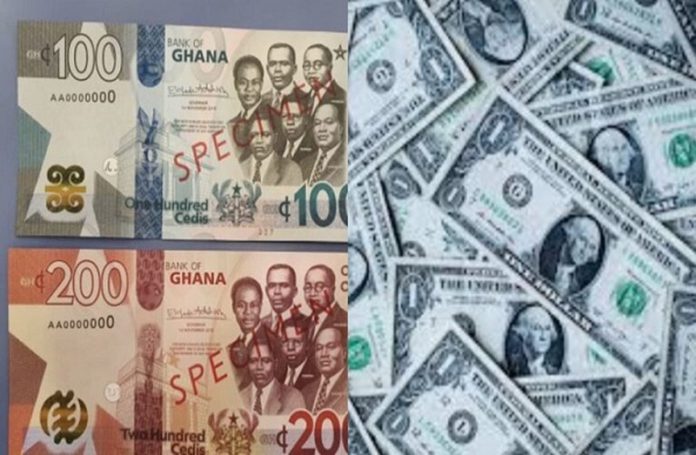The cedi weathered a tumultuous year in 2022, witnessing a sharp decline in value against major international currencies.
According to the Institute of Statistical, Social and Economic Research (ISSER) in its 2022 state of the Ghanaian economy report, the cedi faced a cumulative depreciation of 51% against the US dollar and 44% against the euro, marking its most challenging year in recent memory.
Released on October 31, 2023, the ISSER report delivered a stark assessment of the cedi’s performance, emphasizing the severity of its depreciation against these critical currencies.
The report reveals that in 2022, the cedi depreciated cumulatively by a staggering 51% against the US dollar and 44% against the euro.
This is in stark contrast to the relatively stable exchange rates observed in 2021 when the cedi experienced a depreciation of just 4.2% against the dollar and an appreciation of 3.2% against the euro.
The ISSER report highlights a multitude of factors contributing to the cedi’s substantial depreciation in 2022.
These include the Russia-Ukraine war, which caused fluctuations in crude oil prices, the rise in external debts, credit rating downgrades, speculative currency trading activities, and the loss of access to international capital markets.
Quoting the report, “the worst performance was against the dollar and euro” as the cedi depreciated most sharply against these major international currencies.
The figures presented in the report underscore the scale of the cedi’s depreciation: “Cumulative depreciation of 51% and 44% respectively in 2022 compared to 4.2% and -3.2% respectively in 2021.”
On a quarterly basis, the report highlights that the cedi experienced “massive depreciation rates in the third quarter” of 2022.
Additionally, a closer analysis of monthly rates reveals that the cedi’s worst performance occurred in October 2022.

